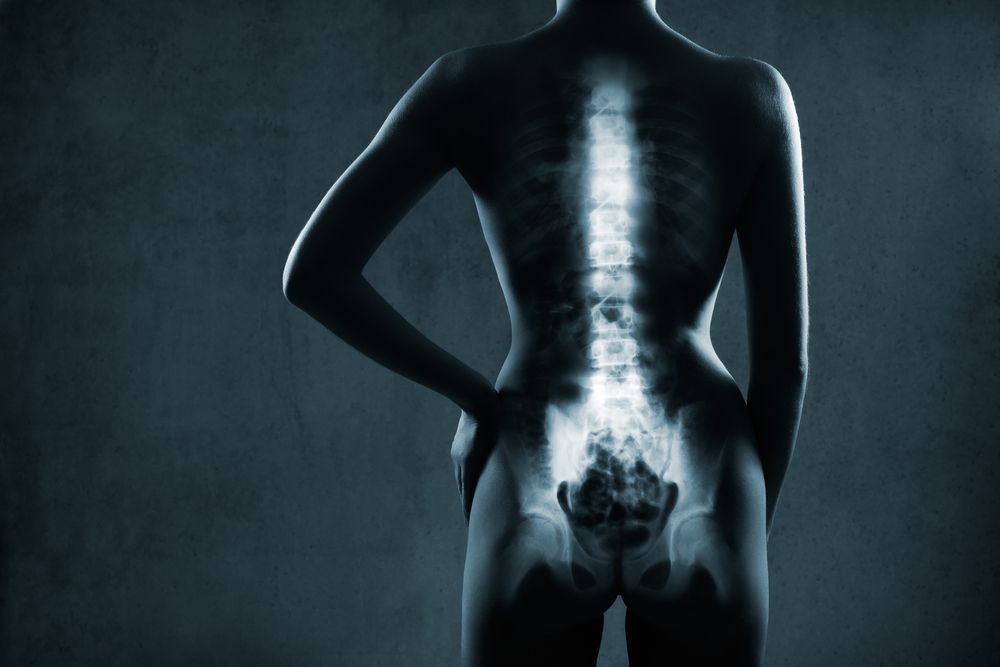Conventional Assessments in axSpA May Not be Enough
(©Hamara,Shutterstock.com)

Currently the modified Stoke Ankylosing Spondylitis Spine Score (mSASSS) represents the gold standard for assessment of structural damage in the spine of patients with axial spondyloarthritis (axSpA). Maria Llop and fellow researchers in Germany and Spain have found that incorporating a lumbar anterior/posterior radiograph in the assessment of structural damage in the spine identified more patients with axial spondyloarthritis disease progression than did the conventional mSASSS tool alone.
The findings appear in the May 24 issue of Arthritis Research & Therapy.
Axial spondyloarthritis can be classified as either radiographicl, known as ankylosing spondylitis , or as or non-radiographic SpA (nr-axSpA). The former is recognized by the presence of radiographic sacroiliitis while the latter by its absence. Axial spondyloarthritis can lead to structural and functional changes limiting mobility and causing pain.
mSASSS assessment is utilized to measure the state of erosions, sclerosis, squaring, non-bridging syndesmophytes, and bony bridges along the anterior vertebral corners of the cervical and lumbar spine on radiographs in lateral views. A few studies have suggested that the addition of an anteroposterior radiograph my provide additional information when compared to a lateral view alone.
Since the value of an anteroposterior radiographic view is unknown with regards to progression in axSpA, the authors sought to evaluate the performance of the extended mSASSS score by adding the extra view. The extended mSASSS was compared to the conventional mSASSS score for sensitivity.
THE STUDY
Patients with axSpA were enrolled from the German Spondyloarthritis Inception Cohort (GESPIC). Patients had to have complete clinical data and radiographs at baseline and year two. 210 patients with axSpA were included in the analysis. Radiographs of cervical (lateral) and lumbar spine (lateral and anteroposterior) were obtained and scored independently by two trained readers who were blinded to the order of the images and to all clinical data.
The mSASSS scores were calculated as a mean of the scores of both readers. The combination of the scores from both lateral cervical and lumbar views and lumbar anteroposterior views composed the extended mSASSS score. Three aspects of the Outcome Measures in Rheumatology (OMERACT) filter were used:
- Feasibility: Is it practical to apply this measure easily given constraints of time, money, and interpretability?
- Discrimination: Does the measure discriminate between progression or no progression?
- Truth: Does the tool measure what is intended in an unbiased and relevant way?
With regards to feasibility, while anteroposterior lumbar radiographs are routine in clinical practice, they increased the costs of the investigation by approximately 50 percent and the time required for reading by 50-100 percent. Finally the additional radiation exposure was increased by and estimated 60-70 percent.
With regards to discrimination, there was excellent agreement between readers on scores with nearly identical extended and conventional mSASSS scores at baseline and at two years. The agreement for the change from baseline score was moderate between the two measures and only fair for the outcome of progression by greater or equal to two points after two years. Agreement between measures was also moderate for the outcome development of new syndesmophytes or growth of existing syndesmophytes.
The smallest detectable change (SDC) was higher for the extended mSASSS than for the conventional. The extended mSASSS also detected more syndesmophytes in the opinions of both readers as well as new syndesmophytes in more patients. All in all there was a 25 percent, 28 percent, and 46 percent increase in the proportion of patients with progression based on new syndesmophytes, progression of existing syndesmophytes and progression score increase by greater or equal to two respectively.
After both univariate and multivariate analysis, both measures were significantly associated with disease activity parameters (BASDAI and CRP).
Take-Home Points for Clinicians and Final Thoughts
The addition of an anterior/posterior radiograph of the spine increased the sensitivity of the conventional mSASSS measure meaning the extended mSASSS was able to detect more cases of progression than the conventional mSASSS.
The extended mSASSS appears reliable with good agreement between readers on radiographic change and scoring.
These positive aspects of the extended mSASSS must be weighed against the higher cost, increased time to read, and increased radiation exposure especially when the conventional mSASSS was also significantly associated with disease activity measures.
It is nearly always the case that when adding additional tests we find additional information. It is tempting to order everything when the health and well-being of our patients is at stake, but not only are additional tests costly and often less than helpful in making treatment decisions, they can also be harmful leading to unnecessary treatments with side effects and consequences of their own.
These data should be taken and applied on a case-by-case basis. Adding an extra radiograph for every axSpA patient we see is certainly not the answer. However, if the patient appears to have worsening symptoms and the mSASSS is equivocal, getting an AP film might help guide treatment.
REFERENCE
Maria Llop, Valeria Rios Rodriguez, Imke Redeker, et al. "Incorporation of the anteroposterior lumbar radiographs in the modified Stoke Ankylosing Spondylitis Spine Score improves detection of radiographic spinal progression in axial spondyloarthritis."Arthritis Research & Therapy (2019) 21:126 https://doi.org/10.1186/s13075-019-1913-z